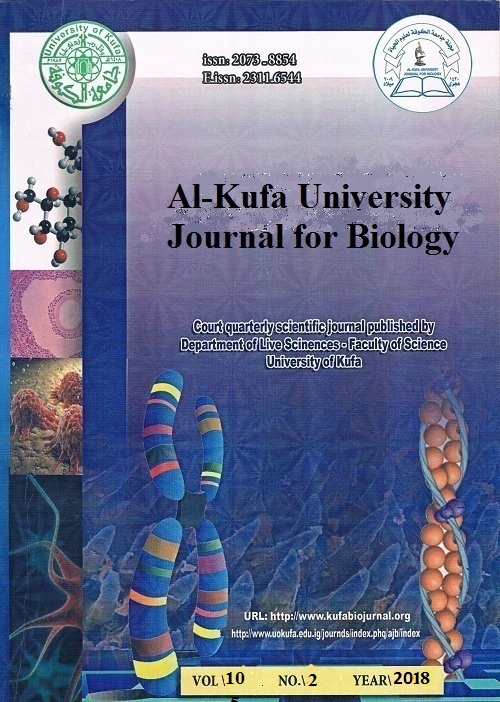A flashlight on Hygiene Hypothesis
DOI:
https://doi.org/10.36320/ajb/v10.i2.8131Keywords:
Hygiene Hypothesis , biosynthesis, cleaning soapsAbstract
Is it necessary to live in too clean environment ? using of various types of sensitizer, cleaning soaps? or just like that live naturally without any fear of that expectant opportunistic creatures that may invade our bodies with all their deleterious weapons! Over use of such means may be simply two edges sword. This is the premise of the puzzle (hygiene hypothesis),our environment is too clean and our immune systems are no longer as heavily taxed with fighting off germs and bacteria. Increased rates of allergies and other conditions like asthma partly attributed to deviation in immune response because of poor immune response towards the infectious agents might be caught by normal contact with them.
Downloads
References
Azad,M.B., Konya, T., Maughan, H., Guttman, D., Field, C., Sears, M., Becker, A., Scott2, J., and Kozyrskyj, A.( 2013). Infant gut microbiota and the hygiene hypothesis of allergic disease: impact of household pets and siblings on microbiota composition and diversity. Allergy, Asthma & Clinical Immunology . 9:15
Benn, C. S., Melbye, M., Wohlfahrt, J., Björkstén, B., & Aaby, P. (2004). Cohort study of sibling effect, infectious diseases, and risk of atopic dermatitis during first 18 months of life. BMJ : British Medical Journal, 328(7450), 1223.
Bloomfield, S., Stanwell-Smith, R., Crevel, R., & Pickup, J. (2006). Too clean, or not too clean: the Hygiene Hypothesis and home hygiene. Clinical and Experimental Allergy , 36(4), 402–425.
Chang, Y.-J., Kim, H. Y., Albacker, L. A., Lee, H. H., Baumgarth, N., Akira, S., … Umetsu, D. T. (2011). Influenza infection in suckling mice expands an NKT cell subset that protects against airway hyperreactivity. The Journal of Clinical Investigation, 121(1), 57–69.
Koloski, N., Bret, L., and Radford-Smith G.(2008). Hygiene hypothesis in inflammatory bowel disease: A critical review of the literature. World J Gastroenterol . 14(2): 165-173
Levinson,W.(2004). Review of Medical Microbiology and Immunology. 9th ed.Lange Medical Books.
Martinez, F.D., and Holt, P.G. (1999) .Role of microbial burden in aetiology of allergy and asthma. Lancet 354: SII12–SII15
Matsushima, K., and Nagai, S.(2012). Unraveling the mystery of the hygiene hypothesis
through Helicobacter pylori infection. Clin Invest. 122(3):801–804.
Okada, H., Kuhn, C., Feilletand H., and Bach J.-F. (2010). The ‘hygiene hypothesis’ for autoimmune and allergic diseases: an update. British Society for Immunology, Clinical and Experimental Immunology, 160(1):1–9
Pang, W., Wang, H., Shi, L., Sun,Y., Wang, X., Wang, M., Li, J., Wang, H., and Shi, G.(2013). Immunomodulatory Effects of Escherichia coli ATCC 25922 on Allergic Airway Inflammation in a Mouse Model. PLOS ONE .8 (3): e59174
Strachan, D.,P.(1989). Hay fever, hygiene, and household size. Br. Med. J. 299:1259-1260
Tulic, M.K., Fiset, P-O., Manoukian, J.J., et al.(2004). Role of toll-like receptor 4 in protection bacterial lipopolysaccharide in the nasal mucosa of atopic children but not adults. Lancet.363:1689–1697
Umetsu, D.(2012). Early exposure to germs and the Hygiene Hypothesis. Cell Research (2012) 22:1210-1211.
Wander, K., O’Connor, K., and Shell-Duncan, B.(2012). Expanding the Hygiene Hypothesis: Early Exposure to Infectious Agents Predicts Delayed-Type Hypersensitivity to Candida among Children in Kilimanjaro. PLoS ONE. 7( 5) :e37406
Downloads
Published
How to Cite
Issue
Section
License
Copyright (c) 2018 Ebtehal Edrees Ahmed Shubber

This work is licensed under a Creative Commons Attribution 4.0 International License.
which allows users to copy, create extracts, abstracts, and new works from the Article, alter and revise the Article, and make commercial use of the Article (including reuse and/or resale of the Article by commercial entities), provided the user gives appropriate credit (with a link to the formal publication through the relevant DOI), provides a link to the license, indicates if changes were made and the licensor is not represented as endorsing the use made of the work.












